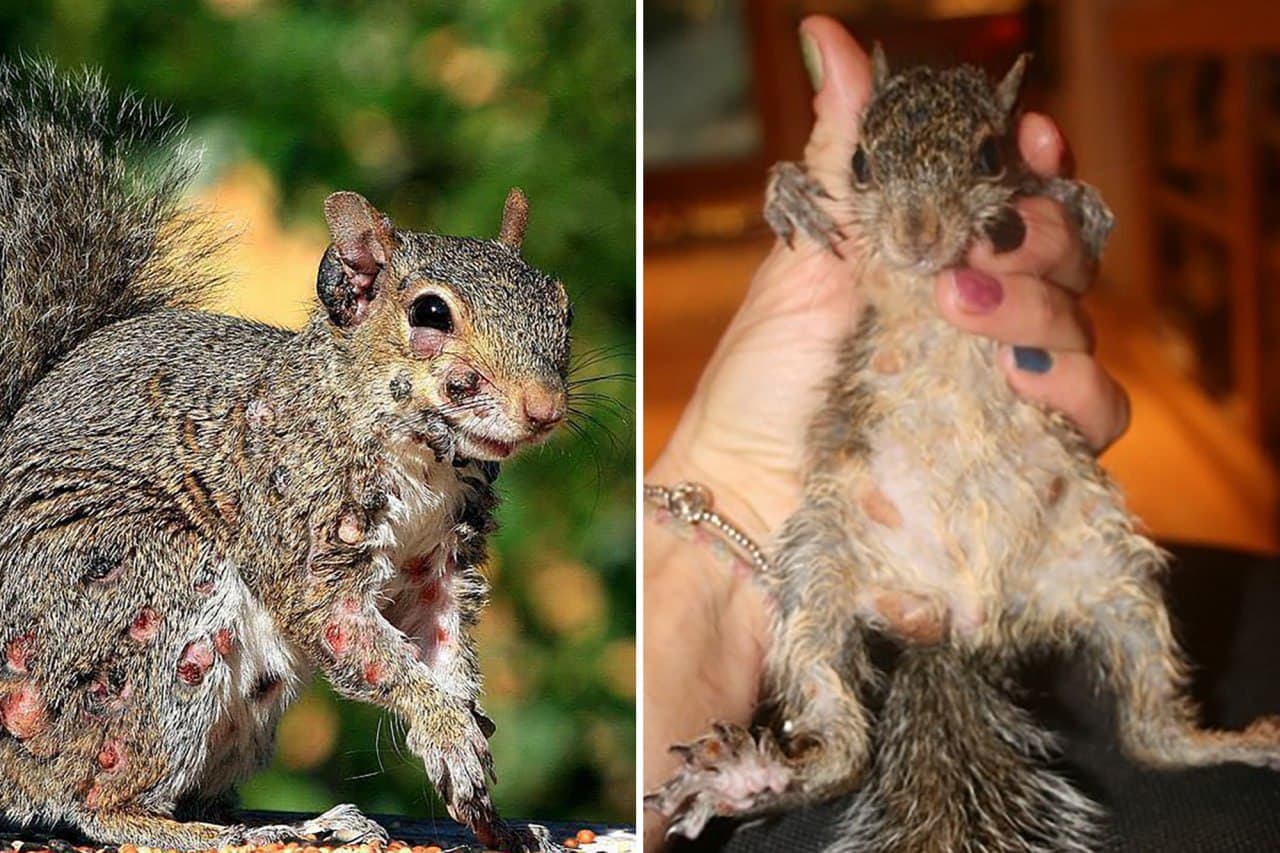Residents across the United States, particularly in New England, are reporting an alarming increase in sightings of what some are calling "zombie squirrels." These animals, characterized by oozing sores and patches of missing fur, have sparked concern among wildlife experts and veterinarians alike.
What Are Zombie Squirrels?
Since early 2023, numerous reports have emerged from various states, with Maine being the epicenter of this unsettling phenomenon. The afflicted squirrels display unmistakable symptoms, including hairless patches on their bodies and severe skin lesions. Veterinarians suggest that these symptoms are indicative of squirrel fibromatosis, a viral skin disease caused by the leporipox virus, which typically resolves on its own but can lead to severe complications in some cases.
According to Dr. Sarah Thompson, a wildlife veterinarian based in Portland, Maine, “The lesions resemble those seen in herpes infections in humans. While many squirrels may recover, the disease can become systemic and affect internal organs, potentially leading to death.” As the number of reported cases continues to rise, experts are urging residents to monitor their local wildlife.
Why This Matters for Public Health
The emergence of zombie squirrels highlights a significant public health concern. Although the leporipox virus primarily affects squirrels, its potential to spread to other wildlife and even domesticated animals raises alarms among ecologists and public health officials. "We need to be vigilant," says Dr. Thompson. "This is a viral infection, and while it poses minimal risk to humans, it can disrupt local ecosystems." The increasing visibility of these animals could indicate a larger issue within the wildlife population, prompting researchers to investigate the virus"s origins and its effects on animal health.
According to the Centers for Disease Control and Prevention (CDC), wildlife diseases can sometimes impact human health, especially in cases of zoonotic transmissions. Although there have been no direct reports linking this specific virus to human infections, the situation remains under close observation. As previously reported, the rise in wildlife health issues, such as the recent Walmart shrimp recall due to radioactive risk, signals a growing trend of environmental and health-related challenges.
Next Steps for Residents and Authorities
In response to the surge in sightings, local wildlife agencies are advising residents to avoid direct contact with affected squirrels and to report any unusual animal behavior. “We are coordinating with veterinarians and wildlife experts to monitor the situation closely,” said Mark Jensen, a spokesperson for the Maine Department of Inland Fisheries and Wildlife. “Education is key; we want the public to understand how to protect both themselves and the wildlife.”
Authorities are also considering implementing testing protocols for affected animals to better understand the virus and its prevalence. As the situation develops, residents are encouraged to stay informed and participate in community discussions about local wildlife health. The situation serves as a reminder of the interconnectedness of wildlife health and human safety, emphasizing the need for ongoing monitoring and research.








